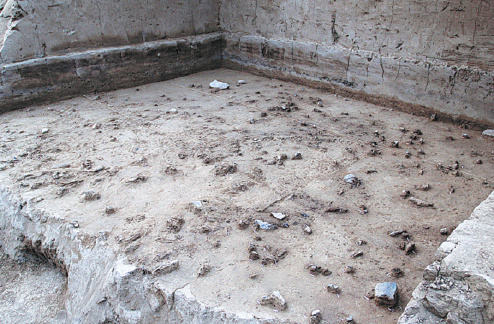

Nevertheless, Yang, also an associate professor with the Institute of Vertebrate Paleontology and Paleoanthropology at the Chinese Academy of Sciences, keeps a cautious attitude while explaining the cultural indication of the ocher. She says the use of ocher for symbolism has so far been unable to be solidly proven, but it could be processed for a more pragmatic purpose.
"Microscopic work shows that the material was used as an adhesive for hafting stone tools and as an additive to efficiently process hide," she adds.
Still, Wang Fagang, an archaeologist at the Hebei Provincial Institute of Cultural Relics and Archaeology who led the excavation at Xiamabei, says the processed ocher unveils a "cultural genome" that will inspire study about how modern human behaviors have evolved and how consciousness has developed.
"Our understanding of archaic people's aesthetics in the East can then be largely expanded," he says.
The excavated area of around 12 square meters is like a time capsule, as hundreds of stone relics were sealed and buried at 3 meters below the current ground surface. The well-preserved remains were thought to be in their original places after the site was abandoned by the residents.
The unearthed bladelike stone tools further help to render an image of the community. Wear patterns indicate that the hafted stone pieces were used for a variety of purposes, including scraping against hard matter (like wood), whittling soft plant and probably cutting soft animal tissue.